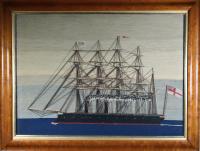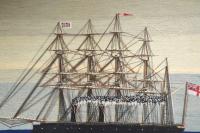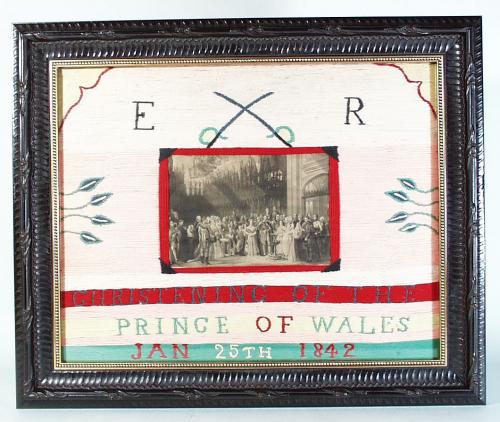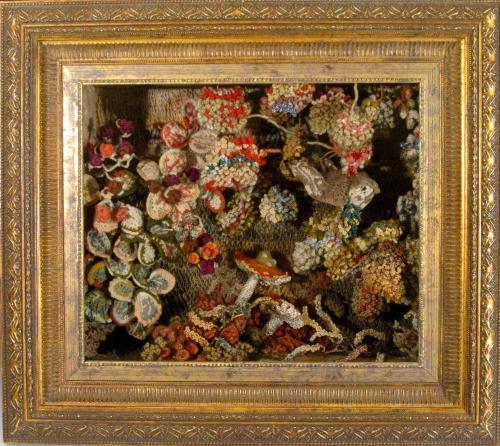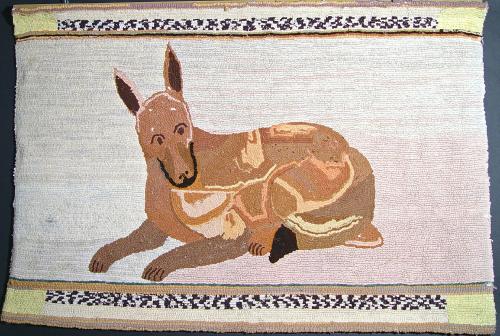
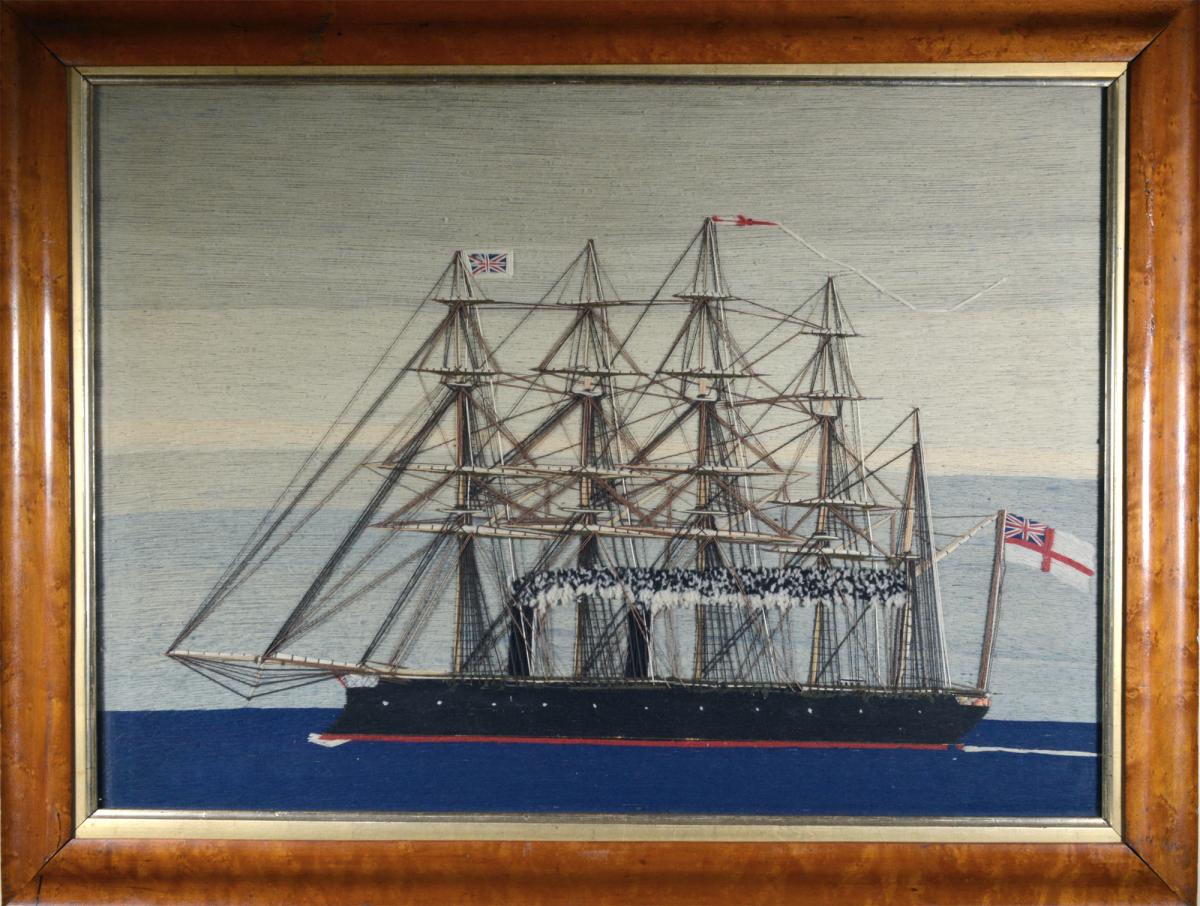
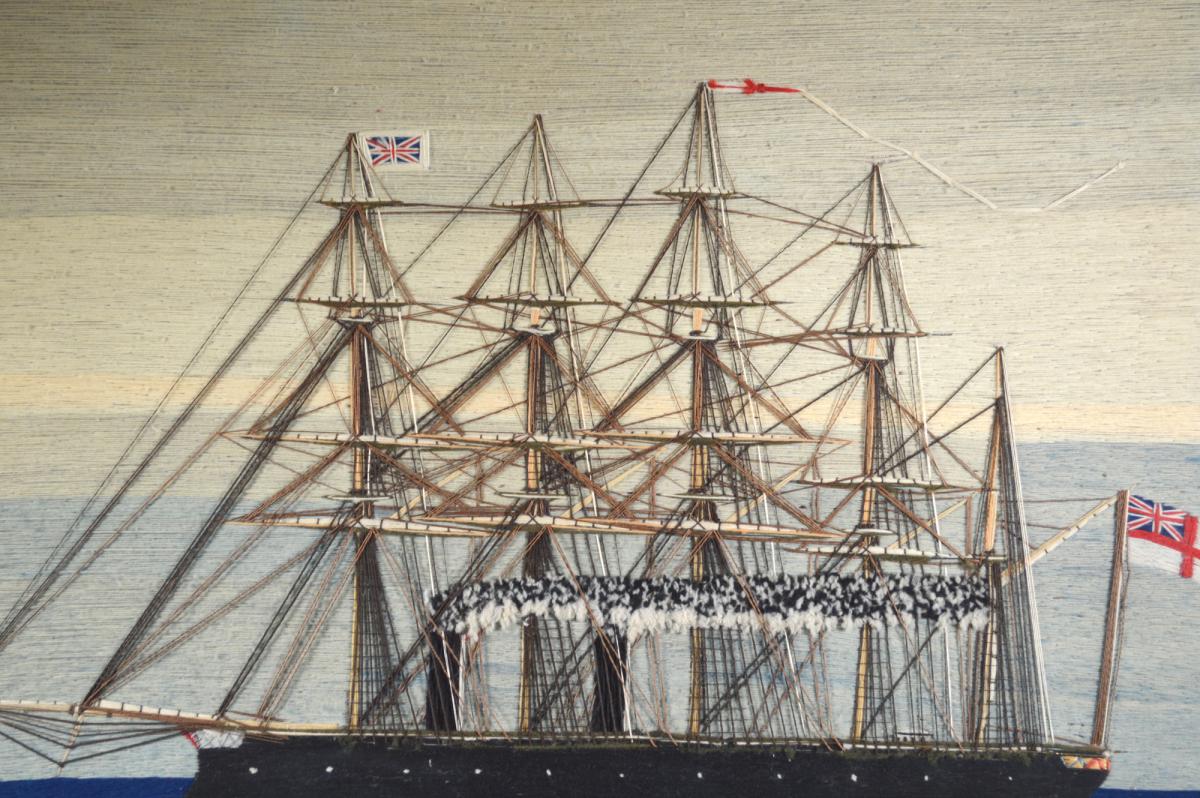
This object is eligible for a Certificate of BADA Provenance
The BADA Standard
- Since 1918, BADA has been the leading association for the antiques and fine art trade
- Members are elected for their knowledge, integrity and quality of stock
- Our clients are protected by BADA’s code of conduct
- Our dealers’ membership is reviewed and renewed annually
- Bada.org is a non-profit site: clients deal directly with members and they pay no hidden fees
Sailor's Woolwork of Royal Navy Five-masted Ship under Steam.
HMS Minotaur or HMS Agincourt, Minotaur Class Broadside Ironclad.
Circa 1880.
The sailor's woolwoork depicts a portside view of a five-masted ship underway with steam, shown as French knots issuing from the two funnels. The ship with a ram bow. The rigging is extremely well made.
The ship steams on a dark blue sea with shades of blue in the sky. A Union Jack flies from the Foremast and a banner with a red cross from the Mainmast. The Stern shows a White Ensign.
This is one of only three Royal Navy Ships built with five masts: HMS MINOTAUR, HMS AGINCOURT and HMS NORTHUMBERLAND.
The Minotaur class ironclads consisted of three armoured frigates built for the Royal Navy during the 1860s. They were enlarged versions of HMS Achilles with heavier armament, thicker armour, and more powerful engines.
The ships of this class were unique among ironclad warships in possessing on completion five masts, named fore, second, main, fourth and mizzen.
HMS Minotaur was the lead ship of the Minotaur class armoured frigates built for the Royal Navy during the 1860s. They were the longest single screw warships ever built.
Minotaur took nearly four years between her launching and commissioning because she was used for evaluations of her armament and different sailing rigs. The ship spent the bulk of her active career as flagship of the Channel Squadron, including during Queen Victoria's Golden Jubilee Fleet Review in 1887.
She became a training ship in 1893 and was then hulked in 1905 when she became part of the training school at Harwich. Minotaur was renamed several times before being sold for scrap in 1922 and broken up the following year.
Dimensions: 22 1/2 inches x 29 1/2 inches wide x 1 3/4 inches
Reference:
They were originally intended to mount forty Armstrong 110 pounder breech loading guns on the main deck, with ten more on pivot mountings on the upper deck. The failure of these guns in service led to a complete re-evaluation of their armament, with a concomitant delay in the arming of the whole class.
The ships were armed with a combination of 9 inch muzzle loading rifles (MLR) on metal carriages and 7 inch MLRs on rope worked carriages. In a moderate swell, these 7 inch guns were virtually unworkable, making the Minotaurs both the heaviest and the worst armed of the Victorian battleships.
The Minotaurs were poor sailors, never exceeding a speed under sail of about 9.5 knots (17.6 km/h; 10.9 mph) with all sail set and a favourable wind. They were, in spite of the number of masts they exhibited, the most sluggish of all British ironclads under sail.
They were regarded as good sea boats and were considered to be among the steadiest ships in the battle fleet. They were slow in manoeuvre under hand steering but were regarded as good after steam steering was fitted.
Stock number
NY9611-umrxThe BADA Standard
- Since 1918, BADA has been the leading association for the antiques and fine art trade
- Members are elected for their knowledge, integrity and quality of stock
- Our clients are protected by BADA’s code of conduct
- Our dealers’ membership is reviewed and renewed annually
- Bada.org is a non-profit site: clients deal directly with members and they pay no hidden fees


